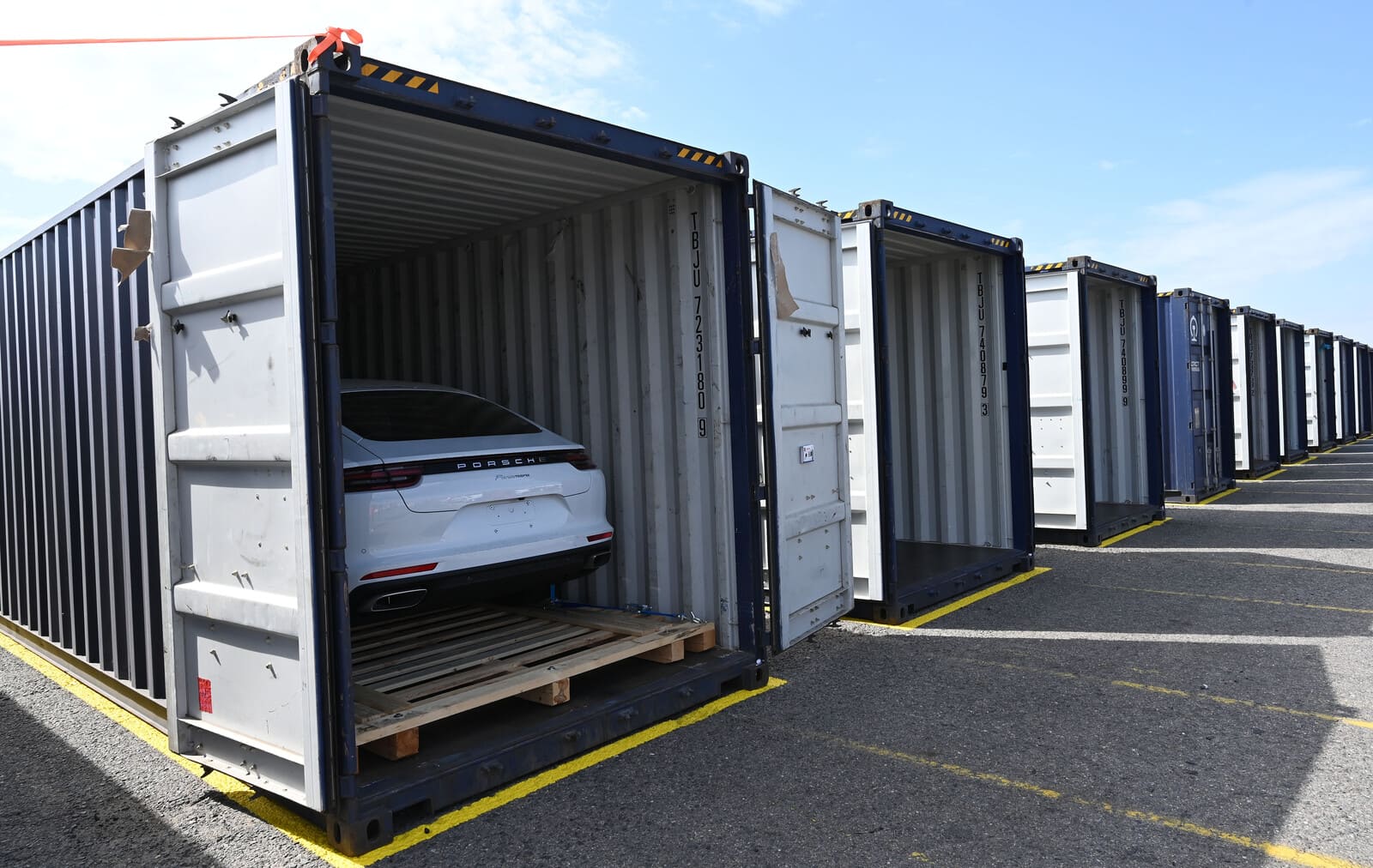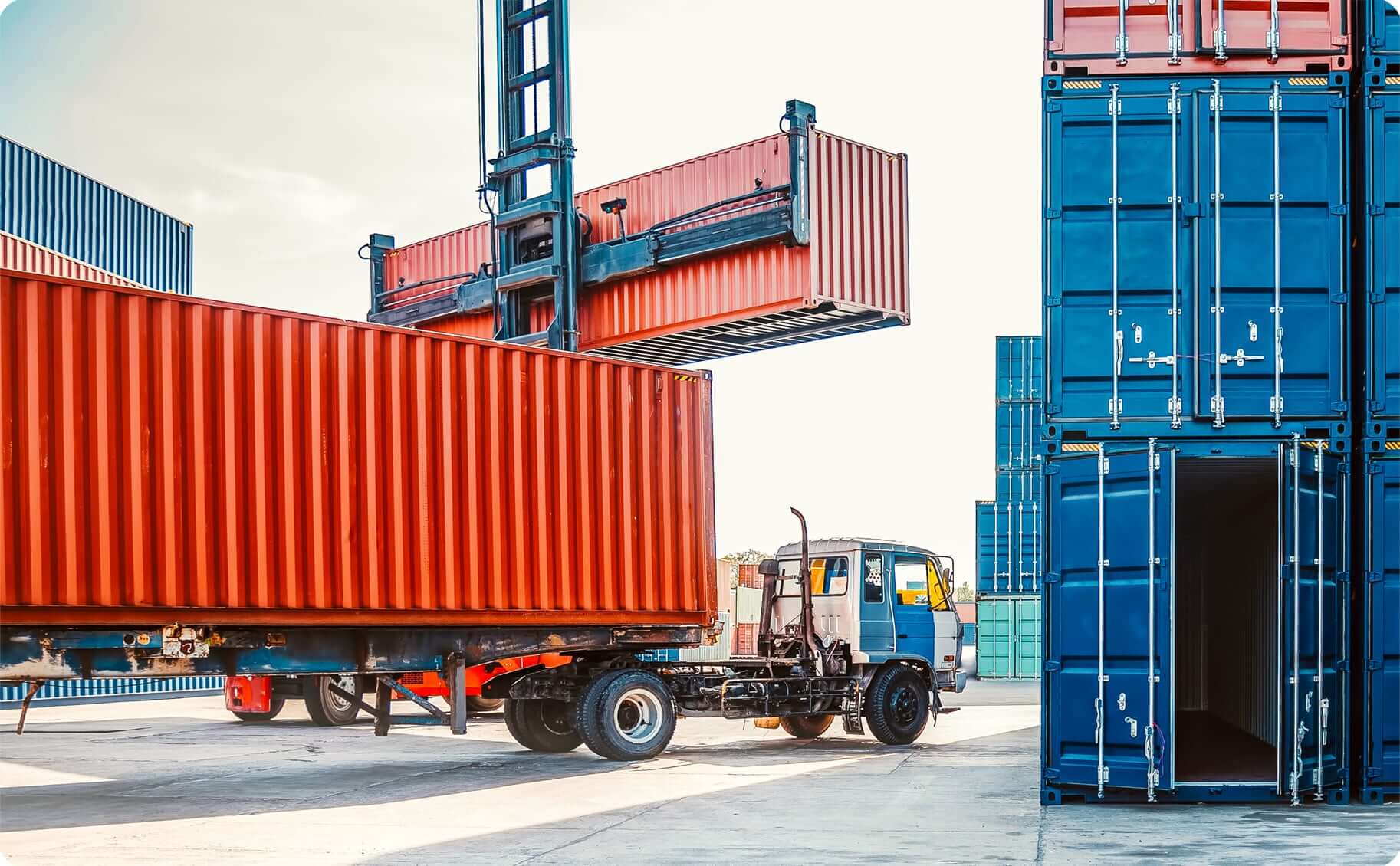
Shipping cars in containers is a popular and secure method for transporting vehicles across the globe. Whether you’re moving, selling vehicles internationally, or purchasing a car from overseas, understanding how many cars fit in a container — and the logistics involved — can help you make the best shipping decision. This guide explains container sizes, loading techniques, safety measures, and key considerations for a smooth and efficient car shipping experience.
Container Sizes for Car Shipping
When shipping vehicles, the most commonly used containers are:
1. 20-Foot Standard Container (20ft)
- Exterior dimensions: 20ft (L) × 8ft (W) × 8.5ft (H)
- Ideal for: One standard car or two small cars
- Commonly used for: Personal shipments, single-vehicle transport
2. 40-Foot Standard Container (40ft)
- Exterior dimensions: 40ft (L) × 8ft (W) × 8.5ft (H)
- Capacity: Up to four sedans or five compact cars
- Commonly used for: Commercial vehicle shipments, multiple car transport
3. 40-Foot High Cube Container (40HC)
- Exterior dimensions: 40ft (L) × 8ft (W) × 9.5ft (H)
- Additional height: One foot more than the standard 40ft container
- Ideal for: SUVs, vans, or stacked vehicles
How Many Cars Can Fit in a Shipping Container?
The number of cars that fit in a container depends on:
- The size of the vehicles
- The loading technique used
- Whether additional cargo is included
Single-Vehicle Shipments
| Container Type | Vehicle Type | Number of Cars |
| 20ft Container | Standard car (sedan, hatchback) | 1 |
| 40ft Container | SUV or luxury car | 1 |
Multiple-Vehicle Shipments
| Container Type | Vehicle Type | Number of Cars |
| 20ft Container | Small compact cars | 2 |
| 40ft Container | Standard sedans | 3-4 |
| 40ft High Cube | Small compact cars | 5-6 |
Note: SUVs, trucks, and vans take up more space, reducing the number of vehicles per container.
Loading Methods for Car Shipping
There are three main methods for loading cars into a container:
1. Drive-In Method (Single or Standard Loading)
- The simplest and safest method
- Cars are driven directly into the container and secured
- Typically used for personal vehicle shipments
- Ideal for one or two vehicles per container
2. Racking Method (Stacking for More Vehicles)
- Special metal racks are used to load vehicles in multiple levels
- Allows more compact cars to fit inside a container
- Requires professional loading and unloading
- Ideal for commercial shipments of four to six vehicles in a 40ft container
3. Disassembly Method (Partial Dismantling)
- Used when fitting large vehicles or maximizing space
- Side mirrors, bumpers, and other detachable parts are removed
- Common for oversized vehicles or shipping non-running vehicles
- Ideal for SUVs or when shipping multiple cars
Safety Measures for Transporting Cars in a Container
Proper securing and preparation are essential to prevent damage during transit.
1. Securing the Vehicles
- Wheel chocks and straps must be used to secure cars and prevent movement
- Wooden blocks or airbags may be placed around the vehicle for extra stability
- The handbrake should be engaged to prevent rolling
2. Pre-Shipping Vehicle Preparation
Before loading your car into a container:
- Clean the vehicle inside and out for a smooth customs inspection
- Reduce fuel to one-quarter tank or less to comply with safety regulations
- Disconnect the battery to prevent accidental discharges
- Remove or secure loose items inside the car
- Document existing damage with photos for insurance claims
Cost of Shipping Cars in Containers
The cost of shipping cars in a container varies based on:
- Container size
- Number of cars being shipped
- Origin and destination
- Customs and import taxes
- Additional services like door-to-door transport or terminal-to-terminal delivery
Estimated costs:
- 20ft container (one car): $1,500 – $3,000
- 40ft container (two to four cars): $3,000 – $5,000
- 40ft High Cube (five or more compact cars): $4,000 – $6,500
Prices vary depending on the route, port fees, and carrier charges.
Which Container Should You Choose for Car Shipping?
Choosing the right container depends on:
- The number of cars – Single shipments can use 20ft containers, while bulk shipments require 40ft or 40HC containers
- Vehicle size – Large SUVs or trucks require more space and special loading techniques
- Destination – Some ports have restrictions on container sizes
If you’re unsure about which container is best for your shipment, consult with an experienced car shipping company for professional guidance.
Ship Your Cars Safely with RAM International Shipping
At RAM International Shipping, we provide reliable and cost-effective car shipping solutions for individuals and businesses worldwide. Whether you’re shipping a single car or multiple vehicles, we offer:
- Secure container loading with expert handling
- Affordable international car shipping rates
- Customs clearance assistance for a hassle-free experience
- Fast and reliable delivery to global ports
Contact us today for a free quote and let our experienced team handle your vehicle shipment with care.



